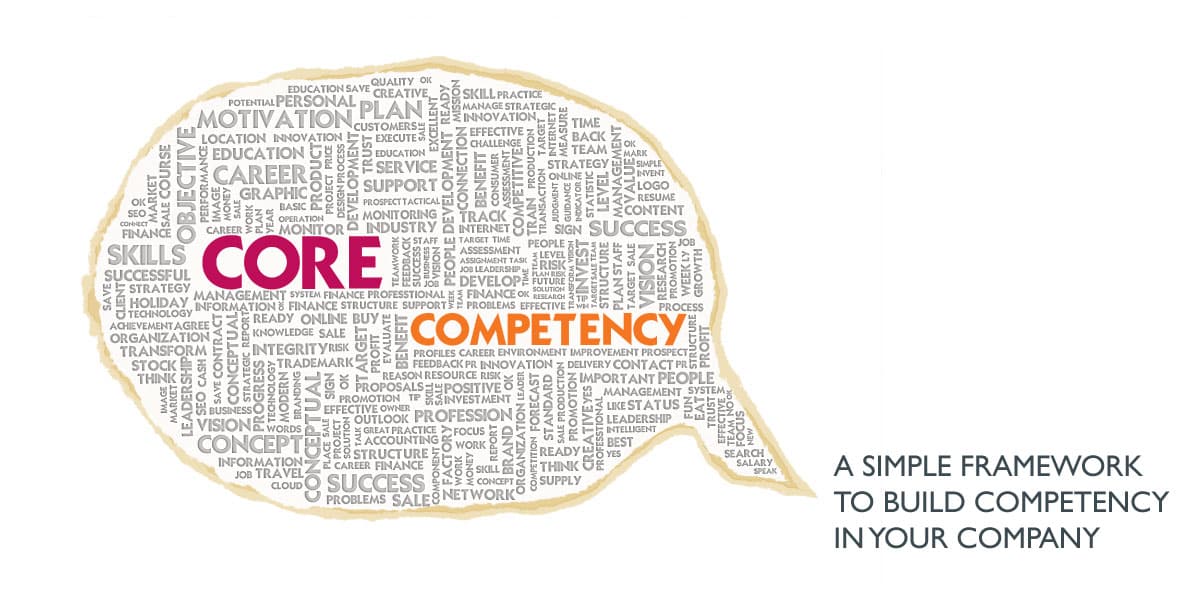08 April 2019
6

Competency-based training (CBT) has quickly become its own core competency. The methodology is not necessarily new to learning and development professionals, but it has experienced a paradigm shift and gained renewed momentum as a result.
At the most basic level, a competency is the ability to do something successfully. In the context of L&D, a competency is a group of skills that are standardized across an employee’s responsibilities, role or job type, location or department. What’s unique about competencies is that they aren’t static – a competency can be learned and developed.
According to HRDailyAdvisor, “competency-based training is broken down into much smaller units that are focused on one single key skill. The learner must demonstrate his or her mastery of that single skill or competency before continuing to the next segment of training.”
Competency-based training is also a crucial component in an organization’s overarching performance management program.
“Competency-based training is broken down into much smaller units that are focused on one single key skill. The learner must demonstrate his or her mastery of that single skill or competency before continuing to the next segment of training.”
The Benefits of Competency-Based Training
- Empower employees to take charge of their learning opportunities
- Boost higher employee engagement and retention
- Create a strong bench of talent for key advancement positions
- Stay ahead of industry innovation and competition
- Develop a strategic partnership between Learning, HR, and Ops
- Support an ROI business case for a higher learning budget
In a report from The RBL Group, over 74% of responding companies indicated they had a defined competency model that described a unified theory of what leaders should be, know, and do (and a full 100% of companies that made the global Top Companies list do). Relatively speaking, that’s a decent number.
So, which methodology are these companies deploying and what technology supports it? Are they still relevant in today’s business context? And how can aspiring organizations launch or overhaul their competency-based training program?
We can answer those questions by looking at a simple framework to define and build your own competency-based training methodology.
A Simple Framework for Competency-Based Training Programs
Developing a competency model incorporates three key elements — standardizing competencies, building and delivering the earning (training), and measuring and analyzing results. Here’s a deeper look into the three-step process.
STEP 1 — Identify and Define Core Competencies
Establishing core competencies gives an organization a clear way to raise the bar on performance by providing employees with clear road maps to increase their capabilities incrementally.
The methodology can also be used to support employee development, compensation, promotion, training, and new hire selection decisions.
Tasks to execute this step include:
- Identifying and defining core competencies
- Determining how they will be measured and setting targets
- Grouping your competencies for learning programs
- Organizing competencies into an organizational matrix
STEP 2 — Create a Competency-Focused Learning Program
This is the process of training and supporting employees’ development of the core competencies they need to perform their jobs at a high level.
Often, companies create their employee learning programs according to informational topics without considering competencies, which presents a missed opportunity. To leverage a more results-focused learning program, organizations need to group them according to jobs or titles, so they can be used to create high-impact lessons.
If you ask most training leaders where they start when creating employee-training programs, their answers often include: learning objectives, storyboards, and “just getting it done.” However, starting with a standardized set of competencies opens up multiple new opportunities.
Tasks to execute this step include:
- Identifying strengths and gaps in a current employee-learning program
- Creating learning programs that leverage the strengths and bridge the gaps, and
- Developing lessons around groups of core competencies
STEP 3 — Measure the Results
Measurement is the process of capturing employees’ improvement in their jobs’ core competencies through testing and exams, including surveys, observation checklists, skills validations, and subjective manager evaluation of knowledge in action.
What’s missing from traditional employee performance programs is a way to integrate what organizations want to achieve with how employees’ performance impacts their goals. To support a competency-driven learning program, organizations need a way to measure results.
By defining the core competencies and connecting them to learning, companies can measure the impact of competency and skill development within their organizations. Through this linkage, they can more adequately and effectively support the measurement of learning effectiveness and business impact — allowing them to calculate something that is not easy to achieve within most programs: a training ROI.
Tasks to execute this step include:
- Choosing a preferred method of measurement for each competency
- Developing a rating system
- Setting baseline or benchmarked measurements
- Establishing milestones for employees to shoot for
- Choosing the frequency of employee review
- Considering a continuous program of learning and review
- Measuring the learning program’s ROI
Is Your Organization Ready to Leverage Competencies?
Is your organization ready to create a competency-based employee performance management program? To assess your organization’s readiness for this result-driven approach, ask yourself these questions:
- Do you have clear success criteria for employees at your organization?
- Do you have strong performers who still somehow fall short after a promotion?
- How do you know when you’ve reached the ‘finish line’?
- How do you know where you’ll go next after you’ve achieved each milestone?
RELATED RESOURCES



